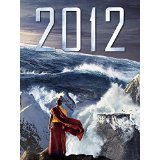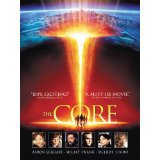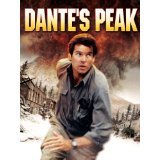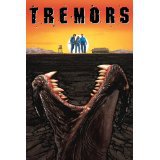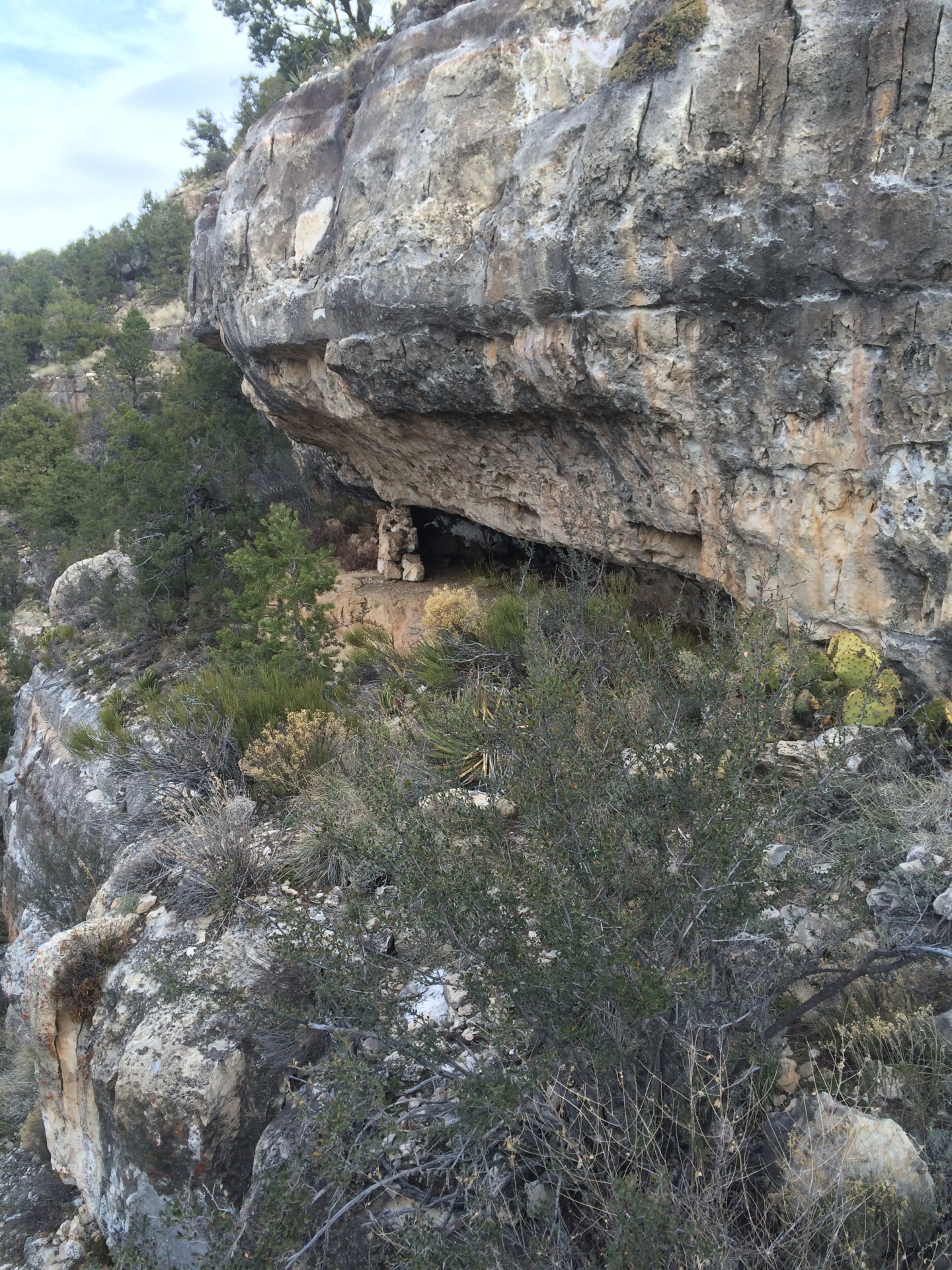
by The Goat | May 12, 2021 | Glamping, Uncategorized
Keeping your relationship healthy and strong is far from easy. As you and your partner age, you will have to pursue separate interests to maintain your sanity. On average, couples spend around two hours a day with each other. Ideally, you want to share the interests you have with your soulmate to make your relationship healthier. If you have recently unlocked your love for the outdoors and want to take your partner camping, you need to plan out this experience in detail.
Your main goal should be to provide your partner with a great camping experience. If they have a good time camping with you on the first go-around, they should have no problem going back in the future. Here are some things you need to keep in mind when trying to have a great camping experience with your significant other.
Try Glamping First
The type of camping trip you plan for you and your soulmate will depend solely on their love of the outdoors. There are a number of people who simply don’t like “roughing it” outdoors. If your partner is one of these people, you have to find a way to make the camping experience more luxurious and comfortable. Glamping is a term used to describe the marriage of glamour and camping.
Taking your love on a glamping trip will allow you to show them the joys of nature while staying in five-star accommodations. The team at Canyons and Chefs offers private chef glamping experiences that are one of a kind. Once you and your partner experience one of these trips, you will never want to camp any other way again.
Go on Short Trips In The Beginning
If your partner has never been camping, then taking them on a week-long trip is a bad idea. Having unrealistic expectations for your first camping trip with your partner can lead to fights and lots of unwanted stress. This is why you need to get your soulmate comfortable with camping by starting small. Instead of going on a week-long camping trip, take your partner on an overnight excursion.
With these shorter trips, you can avoid overwhelming your significant other. As you start to plan your first couples camping trip, be sure to ask your partner for input.
Prepare For Meal Time
Some people think that camping involves depriving themselves of good food. In reality, there are a number of modern tools that make cooking in the wild easier than ever. Rather than leaving meal time on a camping trip to chance, you have to figure out your menu ahead of time. By doing this, you can get ingredients together and make plans to make each meal under the stars with your love. If you want to make eating on your camping trip easier, then hiring professionals to cater is a wise move.
Do you want to plan the glamping trip of a lifetime? If so, check out the glamping experiences we have to offer.
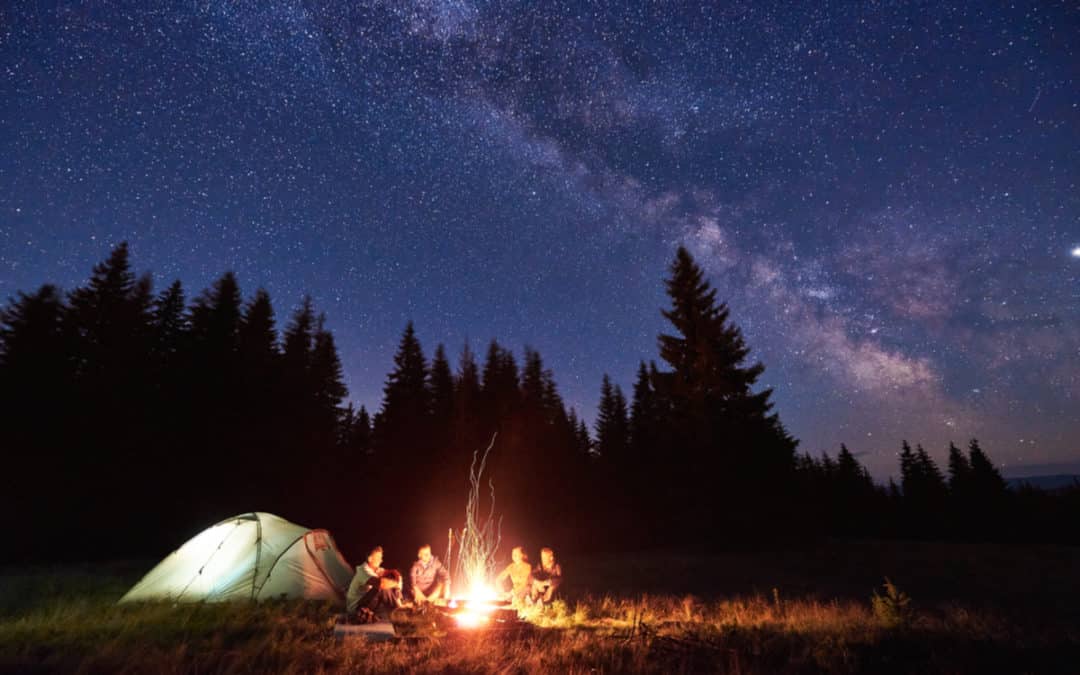
by The Goat | Nov 15, 2020 | Uncategorized
Thanksgiving is on it’s way. It’s a chance to spend time with family, eat good food, and make new memories. However, for a lot of families, Thanksgiving will look different this year due to COVID-19. So, why not fully embrace the differences this year, and celebrate Thanksgiving on a campground this year. We have a few tips for you to make sure your camping trip is a memorable one:
- Keep an eye on the weather.
Before you plan a camping trip on Thanksgiving, make sure you prepare for the weather. The last thing you want to be hit with is a surprise rainstorm. So, pack a tarp or an all-weather canopy to protect you and your loved ones. In addition, you can also get gazebo curtains that can be additional protection from any wind or rain.
- Plan and cook dishes ahead of time.
You will want to prepare one of the most important features of Thanksgiving – the food. Whether you want turkey with all the fixings, or you want to cook something different, make sure you plan in advance. You’ll also want to cook in advance too before you even get to the campsite. Doing any major roasting and baking at home and re-heat food at the campsite. If you want to do something different, contact us at Canyons and Chefs and ask us about our private chef services.
- Be as simple as you possibly can.
Cooking food for your camping trip will take longer and take more planning than you initially expect. So, plan for simple dishes, such as easy side dishes, appetizers, and desserts. Also, make this a family affair, right down the planning and preparation. Whether it’s a small Thanksgiving affair or with extensive friends and family, ask people to help you, whether it’s bringing side dishes or contributing to larger equipment you’ll need for the trip.
- Don’t forget the décor.
Just because you are celebrating Thanksgiving differently, it doesn’t make it any less of a special day. Add festivity to your celebration, both in big and small ways. Get a decorative table cloth that has a fall harvest appearance. Make sure you bring extra lighting since it gets dark earlier during this time of year. Bring candles, flameless candles, string lights, or lanterns, which can all evoke a commemorative mood while adding much-needed light.
If you are considering going camping for this holiday, most importantly, make sure you plan in advance. Thanksgiving is special for many of us, and having your celebration on a camping trip will make it a day to remember. Happy Thanksgiving!
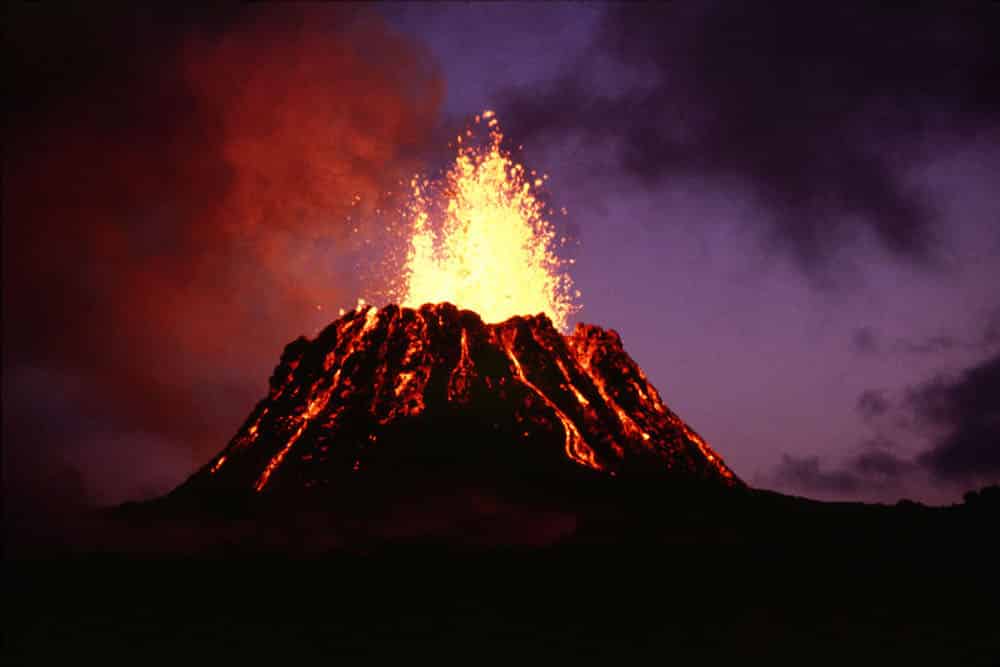
by The Goat | Apr 2, 2020 | Geology, Movies, Uncategorized
#3. The Core

Look Mom, the core is…it’s….doing something?!
Geologic Sin Meter: Off the Charts
This rating means that this movie literally broke the meter, and I had to repair it while laughing madly. This movie takes the proverbial cake for bad science movies.
Movie Background:
The premise of this movie is that the the core of the Earth is shutting down, likely taking the entire planet down with it. Roughly 3/4 of the way through the movie, it is revealed that the likely cause is D.E.S.T.I.N.Y, a fancy acronym for weaponized seismic waves created by our very own government (with the help of one of the geophysicists tabbed with saving the planet).
Four scientists (two geophysicists ( (Dr. Josh Keyes (Aaron Eckhart), Dr. Conrad Zimsky (Stanley Tucci)), a geochemist/physicist ((Dr. Ed “Braz” Brazzleton (Delroy Lindo)), nuclear physicist (Serge (Tcheky Karyo)) and two astronauts (navigator Maj. Rebecca Childs (Hilary Swank), Mission Commander Robert Iverson (Bruce Greenwood)) are to save the planet by drilling directly to the core of the Earth to detonate nuclear bombs, restarting its spinning motion and restoring the Earth’s electromagnetic field.
Using the collective scientific knowledge of some of the smartest people on the planet, a plan is devised (under complete media blackout) to build a machine capable of getting there, and guiding a crack team of heroes to detonate said nuclear weapons and save the human race (and many other species).
Geology Background:
The Earth is (simply speaking) composed of three general layers. The crust, which is cold and brittle, forms the surface of the planet on which we trod. The mantle, which is variably liquid and solid/plastic, and the core, which is theorized to be molten iron.

Each of these layers can be further divided into sublayers. The two most important in regards to this movie are the inner and outer cores. The inner core is theorized to be a solid, roughly spherical ball of pure iron, and the outer core is theorized to be molten iron, rotating in three dimensions around the inner core beneath the lower mantle.
The core as a whole is thought of as our planet’s engine, providing energy in the form of heat generated from the formation of primordial Earth and radioactive decay. This drives convection in the mantle, which drives tectonics on the crust. It also is theorized to be responsible for the creation of the Earth’s electromagnetic field, which acts as a protective shield for our surface.

The solid inner and spinning molten outer core produces energy, electric currents, and magnetic fields. Working with the Coriolis effect of the Earth (spinning), this creates enough electricity and magnetism to produce a field that surrounds the Earth. This field prevents 99.9% of meteors from hitting the surface, as well as deflects potentially harmful solar activity (solar flares, solar storms) away from the surface of Earth. Aurora Borealis, more commonly referred to as The Northern Lights, is a product of light refraction from solar flares though the EM field. Aurora Borealis is typically seen near the poles where the solar rays hit the magnetic field at an angle that produces visible light.

Geologic Sin QnA:
Is it possible that the core of the Earth would start “shutting down”?
Given our current theories on the way the core works, no. As described in the Geologic Background section, the core is both solid and molten iron emitting that is a highly condensed ball of iron still burning from the formation of the planet. In addition, the radioactive material found in the mantle decays keeping the fires burning The half-life of Uranium 293 is 14.6 billion years, meaning that only half of this element created in the Big Bang has decayed into thorium 287 or lead 286.
The rotation of the core is due to differential pressures, temperatures, convection currents, and, in part, the Coriolis Effect.
In terms of what this means for Earth, it can be simply said that what drives the heat and rotation in the core and mantle of the Earth, that drive the EM field and lithospheric (crustal) tectonics, remains and will remain intact for potentially billions of years into the future. In fact, the prevailing theory about what will ultimately kill our planet is the death of our sun, and not the burnout or shutdown of the core. Current estimates based on the amount of hydrogen present in the sun puts this occurrence at 5 billion years from today. Plan ahead accordingly.
Could “seismic weapons” be the cause?
Simply: Hell No. Frankly, most of our knowledge of what the core is and how it operates directly results from sending seismic waves through the Earth and measuring their responses. It is how we know that each layer of the Earth differs in its mineralogic composition, is ductile, solid, or molten, and how thick each layer is and where the boundaries are.
Apparently these “weaponized” seismic waves, which would have been used to cause earthquakes in enemy territory, somehow differ from actual seismic waves. Any suggestion that seismic waves of any magnitude or depth would effect how the core of the Earth operates is pure nonsense.
Would the effects of the core shutting down be similar to the effects in the movie?
Let’s assume for a moment that the core did actually shut down (stop rotating). What might happen? To be honest, the effects depicted in the movie might actually be relatively accurate. The shutdown of the core, and the resulting failure of the EM field would cause widespread phenomena that could potentially be extremely destructive.
The pigeons losing their minds at the beginning of the movie? Not far-fetched considering that many birds, mammals, and amphibians use what are known as magnetoreceptors in their brains, using the EM field to navigate. The lightning storms that destroy much of Rome? Quite possible considering that changing EM fields in the atmosphere due to the breakdown may result in enormous, spectacular, and very dangerous lightning storms. People’s pacemakers simultaneously stopping? A severe spike in the EM field frequency could wreak havoc with any device that runs on electricity or magnetic fields including cell phones, computers, watches, and yes, pacemakers.
Could a machine be built to access the core?
With our current technology, no. The furthest below the Earth’s surface penetrated by humans is 6 miles by a Russian oil drill. In the movie, the machine built by Lindo’s character Dr. Ed Brazzleton out of “Unobtanium” (a fictional metal that can convert heat to energy and withstand pressures found at the core) does the job. This element does not, and potentially will not ever exist or be discovered/created.
Furthermore, it is quite unclear in the movie who Dr. Brazzleton is working for or where he might get the funding to work on this kind of a project. Any good academic knows that in order to do anything that requires money and time, grants must be applied for and received through painstaking and competitive review processes. It is nearly improbable that Dr. Brazzleton used his own money to develop this material without the knowledge or funding of any outside entity. That is one hell of a pet project.
He unveils his prototype from under a dusty tarp in a lab set up in the Bonneville Salt Flats of Utah, a highly remote and inhospitable place where experiments of this kind would almost certainly never take place. Area 51 you say? My friends Area 51, although it is located in the wilds of the Nevadan Mojave Desert, is one of the most high-tech, state-of-the-art, clean research facilities in the world that is funded (in the tens of millions $/year) by the federal government and employs many scientists, engineers, and specialists.
As far as can be gathered from the film Dr. Brazzleton is working solo in his dusty garbage heap of a lab without any federal funding or knowledge. The military General (Gen. Thomas Purcell) in charge of the mission quips “Do you know the potential applications of this material?”, thereby indicating that the federal government and military (the only two entities who would or could fund a project like this) has no prior knowledge, which leaves very few options for money and purpose. What am I missing here? Oh right, the fact that this is completely ridiculous.
Would a package of nuclear weapons “restart” the spinning of the outer core?
Theoretically, this is not completely bogus. Calculated nuclear explosions detonated at specific times in specific areas may provide the energy that would be necessary to induce a convection current in the molten metal that could potentially restart a slowdown in the core’s rotation (if we once again assume that any of this is legitimate).
Eckhart and Tucci make these calculations on the fly when they realize that the original plan they made did not account for the density of the material in the core, which is found to be less than they had planned for. I don’t have to tell you that these calculations could take weeks or months with exact measurements and empirical observation (experiments), not mere heated moments.
Can lasers melt, or perfectly blast though rock?
Once again current technology points to an answer of “no”. And once again, Dr. Brazzleton has discovered and developed this technology with no discernible financial support or research purpose. The machine made of Unobtanium is fitted with a laser that essentially vaporizes rock (except diamonds?), but does not effect living things as demonstrated by “Braz” and a small mouse in a metal box.
Maybe one day our progeny several generations down the line will laugh at us for being as primitive as to not have this kind of technology, but in 2016 (and certainly in 2003) we do not have this capability, crazy genius one man shows aside.
What would a trip through the mantle actually look like?
This is where the movie starts (or continues) to play fast and loose with the idea that all of our knowledge of the mantle and core is generally theoretical. From giant geodes to giant floating diamond fields, their trip through the mantle is nothing short of a wild adventure.
Let’s begin with the geode where their ship crashes after having nothing to blast through and becoming marooned by giant quartz crystals. A geode is a geological oddity of sorts that has a solid outer shell and a hollow center typically filled with quartz crystals. They form in sedimentary and igneous environments where a cavity is created (by gas bubbles in magma/lava or erosion of limestone or sandstone) and then filled as quartz (SiO2) precipitates through the solid shell into the hollow center.
The likelihood that there are geodes being created and preserved in the mantle is, shall I say, not bloody likely. The pressures, temperatures, convection currents, mineralogical compositions (lack of oxygen and silica), and lack of liquid water to seep and precipitate quartz all add up to a lack of opportunity for a geode to form. In geologic terms, this mantle geode is akin to saying that sand dunes can form without wind, or that coral reefs can form with no calcium carbonate. The conditions and elements necessary for this geode to be created simply do not exist in the mantle.
Now, onto the giant floating diamond field that damages the ship and costs our dear Dr. Brazzleton his life. Diamonds form in the upper mantle at very specific temperatures and pressure (roughly 2000F and about 150km below the Earth’s surface). They are then brought to the surface by deep-sourced eruptions into vertical tubes called kimberlite pipes, an igneous feature.
Diamonds are mantle xenoliths, or chunks ripped from the mantle in these eruptions and deposited in the kimberlite pipes. So, the presence of diamonds during their journey to the core is not wholly ridiculous, and even the fact that they might be mobile and unpredictable is not ridiculous. And who knows? The diamonds gathered at the surface may just be tiny pieces of enormous diamonds residing in the mantle. Again, this is where the movie plays fast and loose with the term theoretical.
My real gripe here is with the laser’s inability to blast through them. Since we’re making things up, why stop here? I suppose some writer got a sense that there needs to be some kind of restraint and boundary, and of course you need some sort of contrived plot device to ensure that Hilary Swank and Aaron Eckhart’s characters are left alone on the ship together.
To answer the question, nobody really knows exactly what this journey would look like, least of all me, a humble sedimentary geologist that only cares about surface processes.
Are geophysicists famous jerks like Stanley Tucci?
Dr. Conrad Zimsky, portrayed by the great Stanley Tucci, is an unapologetic, self-righteous, self-serving, chain-smoking egomaniac. Although he does make the ultimate sacrifice in the name of the human race that does redeem him to a point, Dr. Zimsky is a one-note character that gives even the most pompous research scientists a bad name.
The funny thing is that throughout the movie, it is clear that he is a research-stealing glory hound who is, in fact, the cause of the core shutdown with his weaponized seismic waves (research that he apparently swiped from Dr. Brazzleton, who can officially be called the greatest scientist that ever lived).
I have met and worked with several geophysicists, none of whom remotely resembled Dr. Zimsky. From his autograph signings to his “do you know who I am?” speeches, this character is simply another razor thin plot device to make Eckhart’s humble-genius-that-gets-the-girl character look all that more likable. The bottom line here is that most scientists are devoted to their research and to the Earth and not on some fame-seeking quest (even geophysicists, who don’t even like rocks).
Final Word:
The Core takes quite a bit of deserved flack. My theory on this, and you can decide for yourself, is that it seems to try to present this far-fetched plot as being valid. I have heard people invoke Star Wars, Lord of the Rings and other Sci-Fi movies as comparisons, and on this I could not disagree more. Those are fantasy movies, and this movie tries to represent itself with geologists, geophysicists, astronauts, and chemists, not Wookies and Hobbits.
Even if you want to make those comparisons, you still cannot ignore the little voice in your head during this movie that says “I can’t believe I am actually seeing this…” This movie is not a fantasy Sci-Fi movie, but rather a movie that tries to represent itself under the guise of plausible science. All scientists can typically laugh at and enjoy other geologic disaster movies, particularly the ones on this list; but there is something about The Core that just arouses some deep-seeded vitriol.
It is because one of the opening scenes of the movie depicts Eckhart’s character as a true Man of Science, lecturing at a prestigious university and conducting a valid demonstration on sound waves? It is not a Jedi Knight swinging a laser sword or a Wizard with a long stick pontificating about “The One Ring.” The Core portrays Stanley Tucci’s character as a celebrity scientist, highly respected, lauded, and sought. There are no small green beings in swamps or ogres swinging axes in epic battles for “Middle Earth”. It includes highly-skilled astronauts, mathematicians, computer programmers (hackers), and well-heeled military personnel, not heavy-breathing masked men dressed in black or William Shatner.
All of this adds up to the backlash against The Core. Although it is on this list, I suspect it is here because it is a truly terrible movie with actually bad geology in all its glory. That being said, it is also important to realize that movies intend to dazzle and entertain, not to inform us on reality, which seems to be a line that is consistently blurred in Hollywood. If you want excellent special effects, cool action sequences, and a predictable happy ending, then this is your film. If you want real science, watch a documentary you nerds!
May The Goat be always with you
Going Guided
Hiking and exploring the National Parks, or any of our public lands, is a special experience. Although it is possible to see these places yourself, hiring a guiding outfitter is a great idea. For instance, guiding services provide logistical support, and plan everything for your best possible trip. They provide a great safety net on the trail, and are trained in backcountry medicine. Above all, they provide a depth of knowledge of the region that turns a walk into a true adventure.
Canyons and Chefs provides all of the support you need, and pairs that with professional chefs and expert geologist/guides. Our meals use fresh ingredients and are inspired by local farms, culture, and cuisine. We utilize a mobile professional kitchen as a backbone for cooking over the fire. Furthermore, we provide top-of-the-line gear and passion for the places we explore. In conclusion, you can explore these wild places, but going with an outfitter can create an even more memorable experience. Don’t be shy, and call us!
Read our blog!
For adventure Chef-Driven Outdoor Experiences, see our epic tours in Grand Canyon, Utah, and Arizona!
Follow us on Facebook and Instagram
Explore Further, Be Wild, Eat Like Kings —
Canyons and Chefs

by The Goat | Mar 26, 2020 | Uncategorized
Top 5 Best Bad Geology Movies of All-Time
One of the greatest (and possibly most irritating) pleasures of being a scientist is the plethora of movies that take something minutely theoretically possible, throw it in a pot with pseudo-science, and create a colossal disaster the likes of which the Earth has never seen. Very rarely does any real science make it into these “science-fiction” movies, but that is what makes them both fun and entertaining: the utter lack of reality or science.
Over the past two weeks, we have been gathering votes from our fans on social media naming their favorite geological disaster movies of all time. We have compiled the leading vote getters, so get ready to have your minds blown: Drumroll please…..
(All photos courtesy amazon.com)
#5. San Andreas
Premise: Cal-Tech University seismologists have created a predictive modeling software program for earthquakes that has 100% accuracy. This program predicts that the notorious San Andreas fault, a right-lateral strike-slip fault system on the transform plate boundary of the North American and Pacific plates, is going to rupture with a 9.6-magnitude earthquake.
An S+R helicopter pilot, played by Dwayne “The Rock” Johnson, needs to go through literally hell and high water with his estranged wife to rescue their daughter in San Francisco.
Destruction: The quake rips through Los Angeles and San Francisco, liquefying buildings, opening chasms in the ground, and as the coup de gras, creating a 100m high tsunami that completely inundates the Bay Area. Literally tens of millions of people are killed, trillions of dollars in destruction is created, and (spoiler alert), there is a happy ending.
Geology Sin Meter: Apocalyptic
(For a breakdown, visit The Goat’s blog at bluemarblegoat.blogspot.com)
#4. 2012
Premise: Geologists and Astronomers have discovered that the Mayan Calendar was, in fact, correct in its prediction of the “end of time”. The day: 12/21/12. Scientists realize that the Earth’s tectonic plates will “detach” themselves from the mantle and begin to spin wildly, ravaging the human race. They, along with various world leaders, put into motion a plan (large “arks”) that will spare the world’s best and brightest to begin society anew.
A failed writer, played by John Cusack, must get to one of these “arks” with his estranged wife (cough, cliché, cough), her new husband, and his two children along with a motley cast of characters including a Russian billionaire and his arm candy.
Destruction: The casualty meter in this movie along with the destruction is beyond cataclysmic. Ostensibly, billions of people are wiped out in a chain of disasters including earthquakes, the eruption of the Yellowstone Super Volcano, and worldwide tsunamis that crest the Himalayas (where scientists have pinpointed the exact time the waves will hit the “arks”). Essentially, the entirety of the human race and the world they inhabit are completely destroyed, so the scope of this movie is large to say the least. The running time is also cataclysmic, coming in at just over 3.5 hours (good god)
Geology Sin Meter: Mayan Calendariffic
(For a breakdown, visit The Goat’s blog at bluemarblegoat.blogspot.com)
#3. The Core
Premise: A university Geophysicist theorizes that the Earth’s molten core is cooling and dying given that the Earth’s magnetic field seems to be weakening (cell phones dying, birds flying north, etc.). So, a plan is hatched to bore to the center of the Earth with a machine built of a newly synthesized, indestructible element called “Unobtanium”. Armed with a laser that vaporizes rock, they tunnel to the core to set off a nuclear bomb to “restart” the core and save the planet.
Aaron Sorkin and Stanley Tucci play high-fallutin’ geophysicists (Tucci is signing autographs in one scene, and acts like a jerk through most of the movie), Hilary Swank plays an astronaut charged with commandeering the ship, and Delroy Lindo plays a long-discredited geochemist and rival of Tucci’s character. Together, the fearsome foursome must restart the Earth’s core and spare humanity from meteor showers, solar storms, and broken cell phones (In all reality, if the core died and the Earth’s magnetic field failed, life would not be possible on the planet).
Destruction: Not as much as one might think in this one. A few birds fall out of the sky, and cell phones hit the fritz, but the mass casualties and cinematic manner of destroying the Earth and everything on it are relatively non-existent. Most of the action is centered around the journey to the core, whereupon the ship encounters quite a few troubles including a layer of diamonds (LOL).
Geology Sin Meter: Off the charts. All joking aside, this is perhaps the most ridiculous movie ever made, “scientific” or otherwise.
(For a breakdown, visit The Goat’s blog at bluemarblegoat.blogspot.com)
#2. Dante’s Peak
Premise: An active volcano, similar to Mt. St. Helen’s, threatens to erupt and bury a small, idyllic Washington Cascades town. Enter Pierce Brosnan as a volcanologist, his team, and Linda Hamilton, mayor of the town during its busy summer tourist season. She predictably balks when Brosnan advises her to evacuate the town, and so ensues the battle between geology and humanity.
Destruction: Quite realistic eruption of a volcano and the fallout from it. Pyroclastic flows, lahars, ash clouds, volcanic bombs, preceding earthquakes, acid lakes, human-boiling hot springs, and the burying of a quaint little town. Not as many implied deaths as some others like 2012 or San Andreas, but that’s probably for the best. In a heroic turn of events, a grandma jumps into an acid lake and sacrifices herself for the group.
Geology Sin Meter: Volcanoriffic This movie is, for all intents and purposes, is quite geologically accurate. The eruption is measured and the team of volcanologists are closely monitoring signs of an impending eruption, while making no claims that they can actually predict it with any accuracy. Aside from a few ridiculous things such as outrunning a pyroclastic flow in a jeep, or driving that same jeep over extruding lava, this movie does itself scientifically proud.
(For a breakdown, visit The Goat’s blog at bluemarblegoat.blogspot.com)
And the #1 Best Bad Geology Movie of All-Time: Tremors
Premise: In the Perfection Valley of Nevada, way out in the badlands of the Mojave Desert, something is not quite right. When townsfolk start disappearing, a couple of local ranch hands (Kevin Bacon and Fred Ward) start trying to figure out what is happening. During their wild goose chase, they happen upon a student (Finn Carter) doing her PhD thesis on seismology in the area.
What they discover is nothing less than prehistoric underground monsters that hunt with sonar. Throw in Burt Gummer and Reba McIntyre as well-armed doomsday peppers, and you have yourself maybe the single greatest movie ever made.
Destruction: Houses get knocked down, a Volkswagon disappears beneath the Earth (and is found later by country music emanating from the ground), and Perfection Valley residents are terrorized by the large, slug-like monsters that shoot snakes from their mouths. Awesome!
Geology Sin Meter: Graboid-tastic The science in this movie is actually pretty solid, a surprise for such a goofy movie. The seismic sensors that Rhonda (Finn Carter) has set up can accurately detect the beast’s approach, as any kind of Earth or soil disturbance creates seismic waves. There is even a coherent discussion about the fossil record, and accurate conversation about the geologic time scale. Boom!
This is one of my personal favorite movies, as it is tongue-in-cheek funny with great performances by all the actors. It is fun, goofy, and foolish enough to be a good time for everyone. To boot, it stays true to not just the theoretical, but actual science (monsters notwithstanding).
(For a breakdown, visit The Goat’s blog at bluemarblegoat.blogspot.com)
So there it is people, your Top 5. Watch them over and over, they only get better with time, just like all things in geology. Read The Goat’s blog in the coming days for more deduction of the actual science in these movies, as well as discussions about scientific consultants that have worked on, or refused to work on many of these movies. So grab a bag of popcorn and a beer, grab a rock, and have good time! Cheers!
Going Guided
Hiking and exploring our National Parks, or any of our public lands, is a special experience. Although it is possible to see these places yourself, hiring a guiding outfitter is a great idea. For instance, guiding services provide logistical support, and plan everything for your best possible trip. They provide a great safety net on the trail, and are trained in backcountry medicine. Above all, they provide a depth of knowledge of the region that turns a walk into a true adventure.
Canyons and Chefs provides all of the support you need, and pairs that with professional chefs and expert geologist/guides. Our meals use fresh ingredients and are inspired by local farms, culture, and cuisine. We utilize a mobile professional kitchen as a backbone for cooking over the fire. Furthermore, we provide top-of-the-line gear and passion for the places we explore. In conclusion, you can these wild places, but going with a guide can create an even more memorable experience. Don’t be shy, and call us!
Read our blog!
For adventure Chef-Driven Outdoor Experiences, see our epic tours in Grand Canyon, Utah, and Arizona!
Follow us on Facebook and Instagram
Explore Further, Be Wild, Eat Like Kings —
Canyons and Chefs
by The Goat | Mar 12, 2020 | Geology, Uncategorized

Though it may seem an arbitrary question, we really cannot delve into anything else, nor even have Blue Marble Adventure GeoTourism, LLC exist without discussing something vital. What actually is geology? By dissecting the Greek roots of the name, we can gather geo (Earth) and logy (the study of something) translates literally to “the study of the Earth”. What does this mean? It seems wildly general and somewhat ridiculous.
The truth is that geology is, in fact, the comprehensive science of everything. It includes physics, chemistry, biology, and mathematics. Geologists must possess a fundamental understanding of each of these, and draw upon that knowledge along with observation to deduce an historical account of why everything looks the way that it does. To be a geologist is to be a scientist, a historian, a puzzle builder, an explorer, and a steward of the Earth and cosmos.
In its most pure form, geology is the study of rocks. Where did they come from, how did they get here, and why do they look the way they do? These are all questions that are constantly in the mind of a geologist such that an easy dayhike to anyone else is an opportunity to learn about the historical evolution of the area. Geologists examine rocks from the ground up (no pun intended) to deduce its history starting from its building blocks, the minerals within. The mineral composition, alignment, grain sizes, and various other physical and chemical characteristics can help a geologist determine what a rock is, then allows them to deduce the entire history of that rock and thereby the region from whence it came.
From these most humble of origins, geologists have begun to unravel the mysteries of the creation of the Earth some 4.6 billion years ago until now. From the accretion of the Earth to the present-day Anthropocene, the crust has rearranged itself into three different supercontinents, life begun and species have evolved, glaciers have come and gone, massive volcanoes have cataclysmically erupted, meteors have bombarded, and all of these wonderfully apocalyptic happenings have been recorded by the rocks that they created.
The answer to many of the questions as to why we are here and where we might be going is contained within the rock record waiting to be discovered. Whether you set out to discover them yourselves, or whether to go guided by us here at Blue Marble, we can answer any of the questions that may nip at your existential ankles. Ask a geologist, it will always be a great story!
Photo Courtesy of The Goat, Banded Gneiss Near Durango, CO
For More about geology and all things adventure Follow The Goat
by The Goat | Mar 12, 2020 | Ancient Ruins, Cultural History, Uncategorized
Not Simply Ruins, but Spectacular Cliff and Canyon Living
What makes many of Arizona’s ruins so intriguing is that their building styles flow so gracefully with the geology and topography of the chosen settlement site. Nowhere is this more on display than in Walnut Canyon National Monument near Flagstaff, AZ. These ruins, inhabited between 1150 and 1250 AD by the Sinagua people, are built directly into the sheer canyon walls. Utilizing overhangs in the Kaibab Limestone, products of millions of years of erosion, The Sinagua (translated as “without water”) built a flourishing society of several hundred people, with livestock, crops, and trade with a network of other Puebloans in the region.
Dwellings using “islands”, or overhangs in the limestone
From these positions in the canyon, the tribe could see, hear, and observe everything around them. The settlement was easily defended using this building technique, and the tribe could easily send goods through the network of foot trails, as well as relay messages with signals across the canyon. Any enemy thinking of attacking this settlement would have been well-advised to look for softer targets, as launching an attack against this settlement would have almost certainly resulted in an embarrassing defeat.
The settlements’ clandestine location also worked in its favor. In contrast to the Walnut Canyon Ruins, the Wupatki Ruins roughly 10 miles to the north, also utilized by Sinagua, but mostly Anasazi people, is perched on a mesa, visible for tens of miles in all directions. What makes each of these settlements so unique is their geographic contrast, one on a mesa to see who is coming, and one in a canyon to make sure nobody sees them.
These thought processes, not only in stark contrast to each other, but are in polar contrast to our modern way of “settlement” building. We build for convenience, aesthetics, and capital gain. We pay no mind to sourcing local material, available water and food sources, trade proximity, or settlement defense. These were all important factors in these ancient dwellings that determined the sustainability of the settlement.
Though these settlements were primitive, it does make one wonder about the cyclical nature of human existence, as these dwellings wer built long after powerful and technologically advanced civilizations had come and gone such as the Greeks, Roman, Aztecs, and Mayans. Will our species one day return to this primitive style of living? Only time will tell. Geologic time that is….









